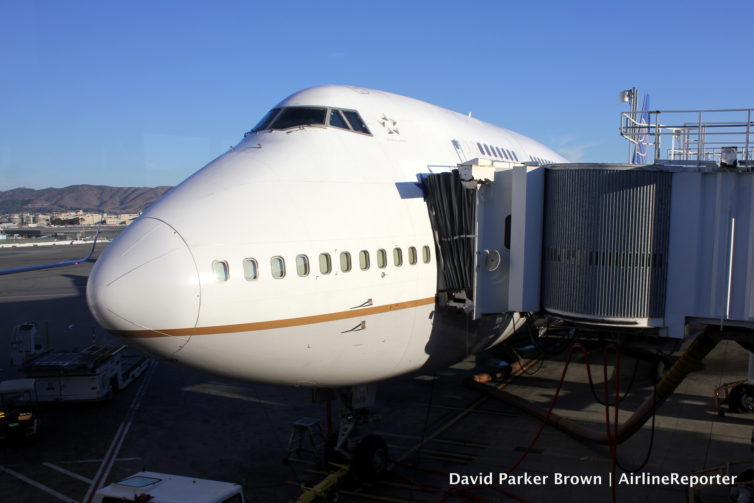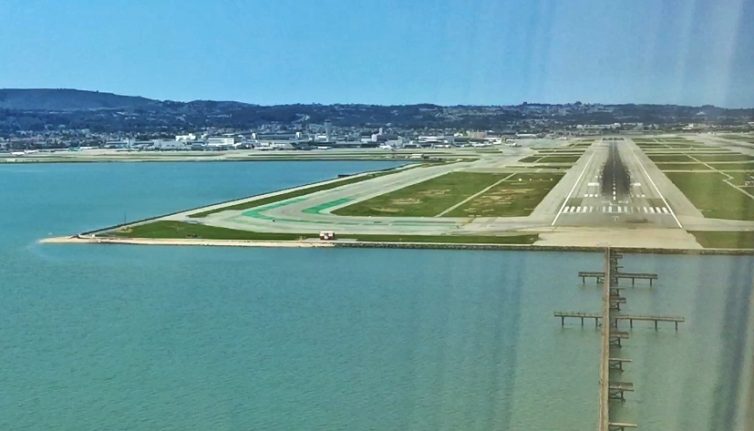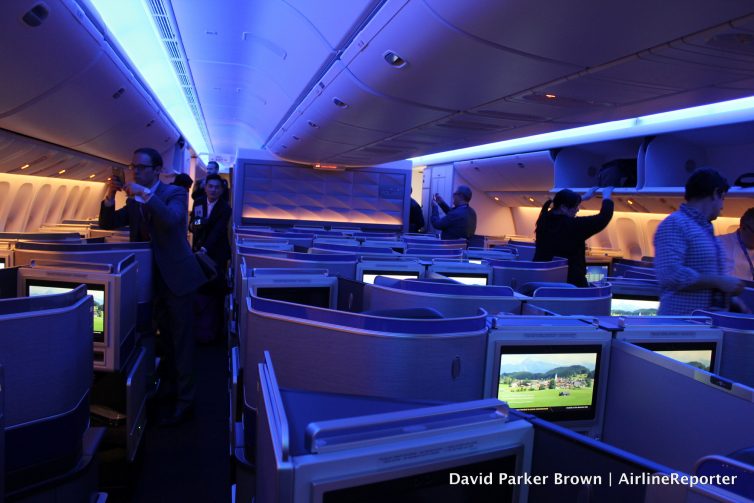
Getting ready for some long-haul flying, a 787-8 is at the gate with a 777-200 domestic in the background.
Domestic aviation in the western United States is a different operation than the population-dense East Coast. With major cities often 1,000 miles apart, often the only way to get between them in less than a day is to fly. Over the years, air traffic to the three largest Mountain West cities – Denver, Phoenix, and Salt Lake City – has increased significantly as the importance of these markets has elevated through sustained and continued growth.
United Airlines has been a dominant force in Denver for many years, with an 80-year history that reaches back into the early years of commercial aviation. It is currently, and by a wide margin, the largest carrier in Denver by passenger enplanements, flights, and revenue.
United’s focus on Denver is no accident; the airport is its most profitable hub, a key part of its route network, and is a focus for continued growth within the airline. As a frequent traveler based in Colorado, I’ve wanted to explore and learn about how United Airlines uses its position in Denver to get people to their destinations, nationwide.
This is the first part of a two-part feature on United Airlines’ operations at Denver International Airport. The second part will cover United’s inaugural 787-8 Dreamliner service to London Heathrow as an example of how United is expanding the reach and prominence of Denver within its network.

A Delta 757 in the Sky Team livery on approach to Seattle-Tacoma International Airport
The recent announcement by Delta Air Lines that it will be ordering 100 new Airbus A321neo jets could put a nail, or perhaps rivet, into the coffin of a 757 replacement.
I knew this Delta announcement was coming years ago when I was working for Boeing and had an insightful chat with a very high-ranking Boeing executive. The chat was not in a public forum, so I will not say who it was, but trust me – this person knew what he was talking about. He told me that he felt Delta may never buy from Boeing again. He went on to talk about how Delta’s former CEO, Richard Anderson, and its current leadership, was pretty much married to the French conglomerate.
Prior to Delta, Anderson made a couple of big Airbus purchases while heading Northwest Airlines. Delta’s entire A319, A320 and A330 fleet comes from Northwest. So what’s this have to do with the flirtation of a new 757? Delta is far and above the biggest 757 user with 128 757s, a total that was boosted after the 2008 merger with Northwest Airlines. United’s the next-largest passenger carrier at 77 and American is third with 52. The aircraft is still popular in the US, but not as much overseas.

The last United Boeing 747 sitting at SFO – registration N118UA
It is okay to get emotional over an airplane. That is what I kept telling myself anyhow as I experienced United’s final 747 flight recently. I was sad that this was going to be a huge milestone for the retirement of Boeing 747 passenger service. I was also happy and excited to be a part of this historic event. Turns out I was going to be able to experience a few firsts and quite a few lasts on my journey. This was to be my first time flying on a United 747 and this was also going to be my first time flying backwards.
-

-
Party at the gate
-

-
Retro goodies
-

-
Pilot signing flight paperwork
-

-
Retro ticket holder, retro flight attendants
At one point I was asked something along the lines of, “There is one other U.S. airline (Delta) that is still flying the aircraft, not to mention British Airways and others. Why is this such a big deal?” At first, I almost felt insulted, but then I realized that from a non-AvGeek perspective, why make a big deal about this plane, with this airline?
First off, I think it is like visiting a really good friend or family member you don’t get to see very often and it is hard to say goodbye. You start out saying “well, I guess I better get going,” and three hours later you aren’t quite out the door yet and still sharing stories of good times before finally parting ways. This was the first goodbye stage between me and the 747.

Our seat on the ride of a lifetime – Photo: Manu Venkat | AirlineReporter
Groundbreaking. Iconic. Gigantic. Gorgeous. There’s a lot of words you could use to describe the 747-400, but as of 2017 there’s a new word that gets added to the list: disappearing. Most airlines are rushing to retire the aging beauty. A few airlines, like British Airways, plan to keep the Queen of the Skies around for a while longer. But in general, if you want to make sure you get one more flight on the aircraft that — for many of us — is the ultimate AvGeek icon, you should make it happen soon.
A ride on a 747 is special, no matter where you’re sitting. However, it’s extra awesome if you’re in the first few rows of the main deck, which give you a one-of-a-kind partially forward facing view. You can actually see the runway ahead of you as you take off and land! We made sure to include a ride on a United 747 in seat 1A as part of a recent around-the-world Star Alliance tour, and from an AvGeek perspective, it was the flight of a lifetime. We took plenty of photos and videos for your viewing pleasure — read on to re-live the magic with us.

A view that should be on every AvGeek’s bucket list – Photo: Manu Venkat | AirlineReporter

United’s first Boeing 777-300ER (reg N2331U) at Chicago
Last Monday, it was disorienting when my alarm went off at 3:30am. At the time, I was not sure why it was happening, but I knew that I was not a fan. That was until I snapped back into reality and remembered that I was getting up early to fly on a few airplanes. The mission of that day was to check out United’s new Polaris business class — and I was up for it! I was to start in Seattle, fly to Chicago to meet United’s first 777-300ER, then I would get to know the product flying to San Fransisco, before heading home. All in the same long day.

In the Polaris business class cabin on United’s first 777-300ER
I have read about United’s new Polaris product and seen the photos, but nothing beats putting it to the test at 40,000 feet. Was it worth getting up so early? Oh you better believe it — it was one stellar experience (okay, I will try to behave with the space puns, mostly).










